Mr. Redheaded Herbalist’s super power is an absolutely preternatural sense of smell. Like he smells things no one else in the room can. He can smell things outside the house. From inside the house. This skill comes in handy when it’s time to pick out peaches at the grocery store, but not so much when his wife is on an epic losing streak testing out homemade deodorants in search of the Holy Grail of “natural” stink stoppers.
MY superpower (oh so ironically) is the ability to render useless just about every deodorant on the market… and even a few of the antiperspirants. In my pursuit of an effective aluminum-free deodorant, I’ve spent more than I care to admit on different brands, and sadly, not one of them has been the panacea I was hoping for.

Over the years, I’ve also tried many (so, so many) recipes for homemade deodorants, including Milk of Magnesia, magnesium oil sprays and even Desitin with varying degrees of success. Both MoM and Desitin can be effective at neutralizing odor, but I’m not a fan of mineral oils and petroleum products on my skin. I wanted a cleaner option. Magnesium sprays work well, but can be rough on sensitive or freshly shaved skin (ouch!)
Why make your own?
So why worry so much about finding a quote-unquote “natural” hippy-dippy deodorant?
For starters, there’s a lot of controversy surrounding antiperspirants, which typically use aluminum salts to block the ducts responsible for sweating. A good deodorant formula should effectively control odor all day while still allowing your body to produce its normal sweat levels. We’re exposed to an awful lot of toxins on a daily basis, and sweating is one of your body’s mechanisms for getting rid of them.
The jury’s still out, but all that aluminum has been linked to a number of diseases such as breast cancer, Parkinson’s disease, Alzheimer’s and dementia. And that’s just the aluminum — take a look at most any antiperspirant’s ingredient label. You’ll also find petroleum products, parabens and triclosan — an antiseptic agent and preservative that started life as a (no joke) pesticide. Due to concerns over potential health hazards, the FDA banned triclosan from antibacterial soaps and hand sanitizers in 2016, but it’s still found in personal care products like toothpaste, shaving cream and deodorants, since they do not fall under the jurisdiction of the FDA.
I’m into bet hedging, so I prefer to err on the side of caution here.
Then there’s the little problem of all those lovely yellow pit stains on your favorite white shirts. I used to assume this was caused by sweat, but it’s actually a result of a chemical reaction between your sweat and the aluminum in your antiperspirant. The more you know…
My recipe is derived from a couple of my favorite aluminum-free commercial deodorants — Lavilin is zinc oxide-based and pretty effective; however, it’s pricy and contains talc and fragrance, both of which I’d rather avoid if possible. Schmidt’s Charcoal + Magnesium deodorant is based on activated charcoal and magnesium (hydroxide). As impressed as I was with Schmidt’s better-than-average stank-fighting ability, I’ve found I just do not tolerate baking soda well. Some folks tolerate baking soda in their arm pits just fine, but I am not one of them.
So aside from being nontoxic actually *working*, the main requirements I have for a homemade deodorant is that it’s fast and easy to make. I personally prefer deodorants that come in little tubs and are designed to be applied with your fingers. More often than not, it’s how I package this deodorant — I have a 1-ounce glass container of it in my bathroom and cute little 0.5-ounce jars in my gym and travel bags. But for those like my husband who prefers a more “normal” application method, try repurposing an old deodorant tube.
I won’t sugarcoat it — cleaning deodorant tubes can be a bit tedious. The most effective way I’ve found is to first dig out any old product, wiping with a paper towel to remove as much of the waxy solids as possible. If the tube is the type that has a removable platform inside the base, go ahead and remove it to make accessing all surface areas a bit easier. Then toss the nearly-clean tube parts into a pot of simmering water and let them soak for 10-15 minutes. Remove from the water and again, wipe down with a clean paper towel.
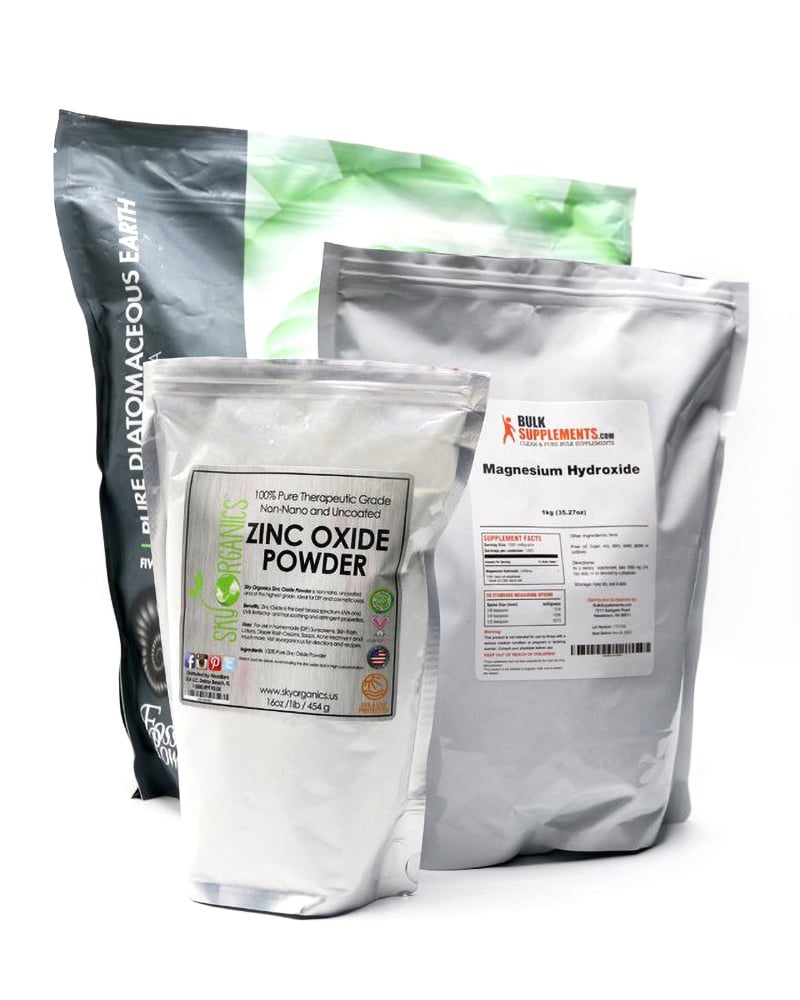
Magnesium
Did you know that magnesium deficiency is also associated with increased body odor? Thanks to industrial farming practices leading to soil depletion, studies suggest that most people these days are deficient in magnesium. Magnesium is essential for energy production at the cellular level and is involved in blood pressure regulation and detoxification, among other things.
My original hope was to include some form of transdermal magnesium in this recipe, since conceptually, it’s totally related to odor prevention! Magnesium chloride is considered to be the most bioavailable choice for transdermal supplementation, but since magnesium chloride is water soluble (and not oil soluble) it needs to be dissolved in water to activate it, creating what is known as magnesium oil that can soak into your skin. This could work well for a water-based roll-on recipe, but it’s problematic for this creamy formulation, since any added water causes the mixture to seize up and do its best concrete impression.
It’s possible that the magnesium chloride would still activate when it comes in contact with sweat, but I’m not certain of this — especially after it’s been mixed with oils. Plus, the salts can sting. Maybe I’m just super sensitive, but I don’t like magnesium chloride on my arm pits.
Magnesium hydroxide will not increase your magnesium status transdermally, but it is an effective antibacterial capable of neutralizing odor caused by bacteria. In suspension, magnesium hydroxide is recognizable as the over-the-counter laxative, Milk of Magnesia, which also has gained popularity as a “natural” deodorant alternative in some circles. On its own, I did not find Milk of Magnesia potent enough as a deodorant, but paired with other ingredients, I think it has value. And because magnesium hydroxide has low solubility, it does not easily sweat off, remaining on the upper layers of the skin as a barrier against odor-causing bacteria.
Zinc
Desitin, on the other hand, actually wasn’t too shabby as an alternative deodorant. Turns out, there’s good reason for this. When we sweat, some of the one hundred trillion bacteria that live on our bodies transforms our sweat into smaller compounds such as sulphur containing thiols and carboxylic acids, which are responsible for the characteristic aroma of stanky armpits. The active ingredient in Desitin is zinc oxide, which apparently, has talents beyond soothing diaper rash and preventing sunburns — it’s also a killer deodorizer. Zinc binds with and neutralizes these funky smelling short-chain fatty acids, converting them into odorless zinc salts — basically stoping B.O. before it happens! One thing I learned from all my experiments, is I doubt I’ll ever bother with a deodorant that does NOT contain a generous amount zinc oxide ever again. It just works!
Note #1: After getting distracted and accidentally adding the mineral ingredients to my jar prior to heating, I learned that zinc oxide and magnesium hydroxide can dramatically change texture when heated. Zinc oxide, in particular, can clump together when heated, leading to an undesirable crumbly texture. So make sure that you add your minerals after melting the oils/waxes and make sure it’s not overly hot when you stir in the minerals.
Note #2: I recommend that you always stick to non-nano zinc oxide in topical applications. Nanoparticles are usually defined as particles smaller than 100 nanometers in diameter (or 0.1 micron), which are small enough to pass through your body’s membranes. This is a good thing for antibacterial effect, (smaller particle size is associated with better antibacterial activity) but there may be hazards associated with nanoparticles passing into the bloodstream. Research on the subject is not settled, but for now, it is probably wise to minimize exposure to nanoparticles. The zinc oxide I used has a mesh size of 325 nm.
Diatomaceous earth
Diatomaceous earth (DE) is a naturally occurring sedimentary rock made from the fossilized shells of teensy, aquatic organisms called diatoms. With a soft, silky texture not unlike talcum powder, DE is rich in highly absorbent amorphous silicon dioxide (75-90% depending on the DE’s source). Think of those silica-gel desiccant packets used to absorb humidity and keep things dry. Diatomaceous earth’s absorbent qualities make it a great candidate for combating sweat and odors in homemade deodorant.
Note: When sourcing diatomaceous earth, it’s very important that you purchase food grade DE. Non-food grade diatomaceous earth intended for use in pools or pest control may contain added chemicals
What about waxes
I love the feel of cera belina wax, so that’s my first choice here, but beeswax will work just as well. The first iterations of this deodorant recipe did not include cetyl alcohol, but trial and error taught me that — particularly with the stick deodorant application — you really need the extra slip that cetyl alcohol provides for comfortable application. Omit at your own peril. Leave it out and we might have to rebrand this as a dual-purpose deodorant and hair removal product (ouch!)
Note that cetyl alcohol can take upwards of 48 hours to reach it’s final viscosity.
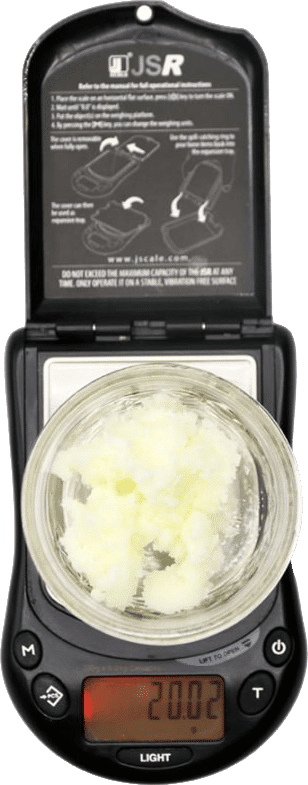
Tallow
If you read Nourishing Winter Barrier Not-Petroleum Jelly, then you’ll already know I’m a huge fan of pastured tallow in skincare. It’s a truly amazing moisturizer base, capable of combating dryness at the cellular level without clogging and suffocating your pores like petroleum-based products can. Tallow is rich in the fat soluble vitamins A, D, E and K, which are necessary to healthy, youthful skin, as well as conjugated linolenic acid (CLA) which boasts powerful anti-inflammatory properties. Tallow is also antimicrobial and antifungal thanks to its palmitoleic acid content, which also happens to be the most active anti-microbial found in our own skin oils (aka sebum). And because tallow’s fatty acid profile is so similar to those of our own sebum, it’s quickly and easily absorbed into the skin without any greasy residue.
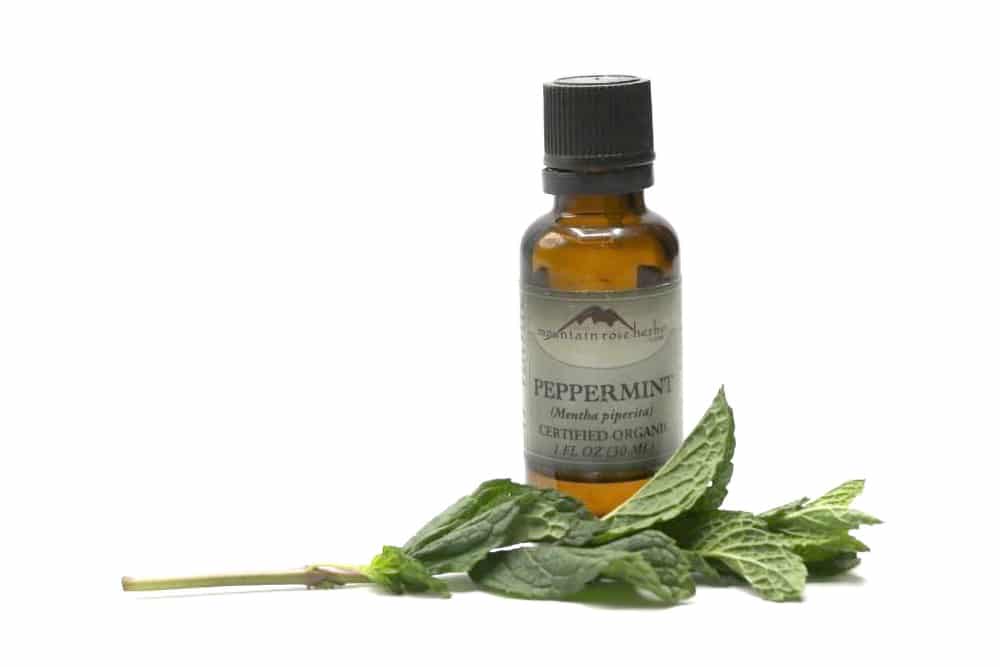
Essential oils
Antibacterial, antimicrobial and anti-fungal essential oils are a great addition to your formula, as they can help to prevent odors from forming in the first place, rather than simply masking odor with fragrance. Some essential oils are especially good at helping to control excessive sweating (aka hyperhidrosis). Sage, tea tree and palmarosa are all good choices, though I believe this recipe is effective enough to use pretty much any essential oil you fancy. I’ve been kinda obsessed with peppermint ever since my first bottle of Dr. Bronner’s peppermint castile soap and I associate it with feeling clean. ♥
So my deodorant is peppermint.
Because.
And there you have it! Go forth and conquer. *
* body odor
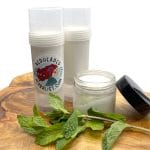
Mineral Enriched Tallow Deodorant
5 Stars 4 Stars 3 Stars 2 Stars 1 Star
5 from 3 reviews
Ingredients
50 g tallow
2.5 g cera bellina or beeswax
3.5 g magnesium hydroxide
10 drops peppermint essential oil
Instructions
- Using a scale that displays up to two decimal places, weigh the tallow, cera bellina wax and cetyl alcohol into a glass jar or borosilicate lab beaker.
- Heat over a double boiler (or other gentle heat source) until the oils and waxes are completely melted and liquid.
- Add remaining ingredients in the order listed, and stir until combined and smooth.
- Pour into your empty deodorant tube. If using a twist tube, you can prevent a “sinkhole” from forming by filling the tube about 4/5s full, and allowing it to set for 20-30 seconds before topping up. You may need to return your mixture to your heat source while you wait, so it doesn’t solidify too much to pour.
- Allow to cool before capping. You don’t want condensation introducing water into your formula. ♥
Notes
You can also store this formula in a 2-ounce glass jar and scoop the deodorant out with your fingers. It works as is, but it will be a bit stiff. If you want a softer, more scoopable formula, try reducing the cera bellina/beeswax to 2 grams instead of 2.5.
I recommend glass containers for storing homemade lotions and potions. Glass doesn’t leach chemicals and it’s easier to clean/sterilize after the product is used up and you’re ready to refill.
If you do choose to use a plastic container, be aware that essential oils tend to react with plastic, so even if you can get it “clean,” your container will likely not be reusable.

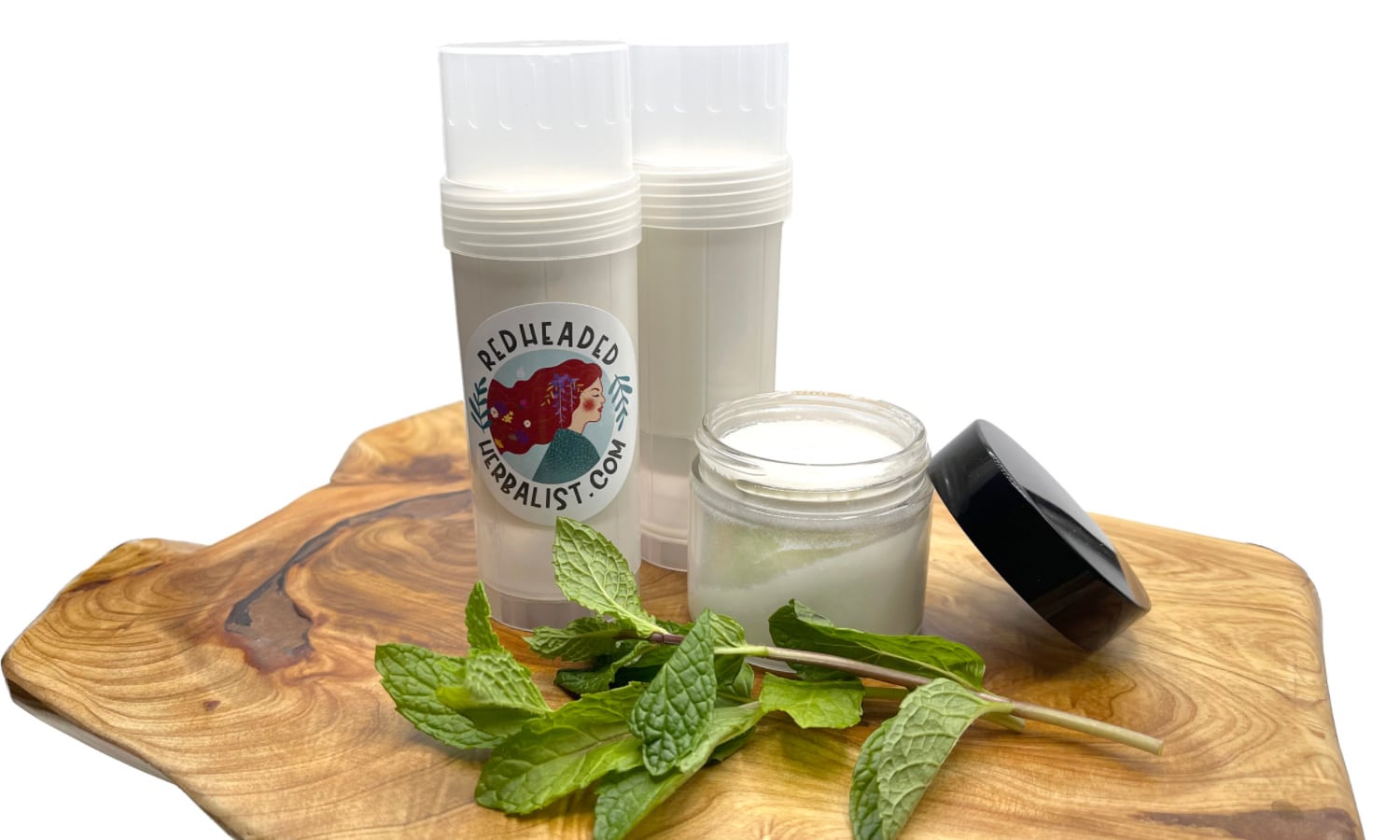


24 Responses
I love, love, love your deodorant!! If it’s possible to love a non living object at that magnitude lol It’s been such a relief to find a safe and effective deodorant! My husband will even use it and doesn’t roll his eyes at another attempt at me wanting him to use more natural products lol Thanks for including how to clean the tubes, I have a few to clean 😜
Thanks for the kind words, Laura! Laura was one of my original “test subjects” and her feedback helped me to fine-tune a number of my products. She bravely used an early version of this deodorant before it included cetyl alcohol and was closer to a depilatory wax than a deodorant 😜
Ha ha oh yes! It wasn’t as bad for me but sharing a deodorant stick like that with my husband 😝 while testing out deodorants…ya not so fun pulling hair off the stick lol sorry if that was TMI but that ingredient addition seriously made all the difference!! So appreciate your diligence in finding quality ingredients that work and aren’t stupid expensive!!
Do you know if you can use magnesium oxide instead of magnesium hydroxide? I can’t seem to find any magnesium hydroxide near me only magnesium oxide.
I haven’t worked with magnesium oxide as much, but I imagine you’ll still end up with an effective deodorant. Magnesium oxide converts to magnesium hydroxide when exposed to sweat or moisture, so in practical terms, you should have a pretty similar product. If you try it, please let us know how it goes!
Have you tried different essential oils or does it have to be peppermint?
You can use whatever essential oil(s) you fancy! Peppermint is just my favorite. I’ve also used clary sage, sweet orange and lavender in the past, and currently, I’m currently doing an elemi + peppermint blend. Sky’s the limit ♥
Can you put into a bar mold?
Hi Georgia, I’m thinking this recipe probably does better in a delivery system that involves a container of some sort – the product will likely get a little melty and messy if handled too much. If you try the bar mold, please let us know how it goes!
How do you think it would work to add a bit of jojoba oil to the mixture instead of the cetyl alcohol? to make it more spreadable? Is that something you already tried?
So cetyl alcohol is a thickener that also enhances viscosity and glide. An earlier version of my deodorant recipe included tallow, jojoba and squalane (no cetyl alcohol) and, in my tests at least, the overall performance of the deodorant – particularly its ability to stay in place on the skin and provide protection – was reduced. I had trouble finding a softer texture that spread smoothly but also contained enough wax to stay put on the skin all day. That said, I’m sure there’s a sweet spot of solid/liquid oils and wax, You’ll definitely need to play around with the amount of beeswax and tallow to achieve the right consistency. If you find something that works, please let us know!
Another thought: You might try swapping the beeswax for candelilla wax, which has better glide than beeswax. It’s also harder than beeswax, though, so I’d try using about half as much. So maybe omit the beeswax and cetyl alcohol and add a gram or two of jojoba and about ~1.25g candelilla wax. Worth a try!
Great! thanks so much for your reply, i am going to experiment a bit 🙂
Have you tried whipping this with a hand mixer? Making it more cream like? Thanks!
I haven’t tried this, mainly because I usually make smallish batches (about 4 sticks at a time), and I imagine a lot of the product would just get stuck in the beaters. If you’d like to try it, you might want to reduce the wax content a bit — maybe by half — since too much wax can make whipping difficult and lead to a stiff or gritty texture instead of a smooth, creamy one. Let the mixture cool slightly until it just starts to thicken (but is still soft), then whip it briefly with a hand mixer. If you do try it, I’d love to hear how it goes!
Alternatively, you could simply stir it by hand as it cools in your jar. Stirring gently every few minutes as it thickens can create a slightly lighter, creamier texture — with a lot less mess 🤔
Thanks! Is the cetyl alcohol the thing that thickens it? Also, I’m seeing on here that leaving the cetyl alcohol out makes it super sticky? That leads me to wonder what makes it super sticky? Like if I decrease the wax (if that’s it) should I also decrease the cetyl alcohol? I’ve gotten all the ingredients, so can do it however. I’ve recently made a magnesium hydroxide tallow, but that didn’t have the any of the other stuff in it. I put it in the freezer a bit and whipped it up nicely. It makes a nice lotion, but as a deodorant, it didn’t work so well, so that I me looking to make it a but better and how I ran into your blog. Thanks for your help!
I’m wanting to try this tomorrow. If I make up as is, will it work to put in it a mason jar and would it work to scoop a bit out to use? I’d hate to get it in a jar and not be able to use it? Any advice here? Thanks!
Yep, it will work in a mason jar, and you can scoop a bit out with your fingers to apply. It’s a bit firm because it’s meant for a deodorant stick – if your house is on the cooler side, it may feel a bit stiff and need to be warmed with your fingers for a few seconds before spreading. For a softer more scoopable formula, try reducing the cera bellina/beeswax to 2 grams instead of 2.5. The cetyl alcohol can stay the same, as it contributes creaminess and glide without too much firmness.
I just wanted to come back and say that this stuff works!! I’m considering putting it in a stick container next time. Also, don’t bother trying to whip it up! It doesn’t work, so I won’t try that again. Anyhow, as is, I have in a jar and just scooping out. I’m tempted to leave like this and perhaps figure out an applicator (to not use my fingers as it sticks under my nails) but at the same time, tempted to just make the stick. This is by far the best recipe I’ve tried. I’m also tempted to just skip the essential oil. I find that the scent doesn’t really stay anyhow. Thank you for a fantastic recipe!!
Yay, I’m so happy to hear the deodorant is working for you! 🥳 You’re correct that the peppermint EO doesn’t contribute much other than I just like peppermint, so feel free to omit. The deodorant works without EOs just fine, but in case you’re interested, I’ve started including elemi essential oil in the deodorant sticks I sell since I learned that elemi may be particularly helpful in controlling specific strains of bacteria that cause body odor 🧐
Do you have a certain brand of elemi essential oil that you use? Thanks! Also, I did order bamboo applicators. We’ll see how that works. One more thing… Are you on Facebook? I was looking through your blog here and can’t wait to dig in more
I use the one from Mountain Rose Herbs: https://get.aspr.app/SH18aM
I do have a (rather poorly updated) Facebook page. I need to be better about using it! 🤦🏻♀️ : https://www.facebook.com/redheadedherbs/
Oh! I also have a group on Facebook called “Growing & Using Medicinal Herbs” that’s moderated by myself and fellow herbalists Suzanne Tabert and Cassidy Moss, in case you’re interested: https://www.facebook.com/groups/485105091884080